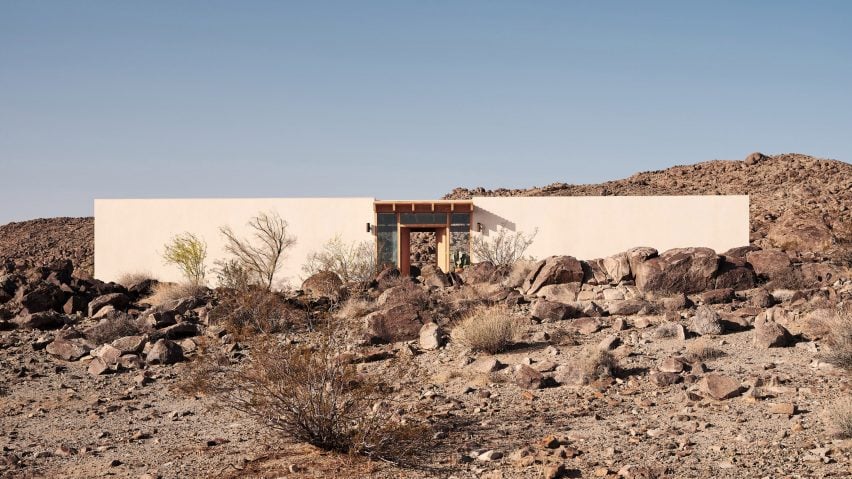
Ryan Leidner Architecture creates home and studio in High Desert
San Francisco studio Ryan Leidner Architecture has based the design of a wood-and-stucco desert house and art studio in southern California on mid-century Eichler homes and southwestern art.
Located in the High Desert region near Joshua Tree National Park, the house was designed for painter Heather Day and her partner Chase McBride.
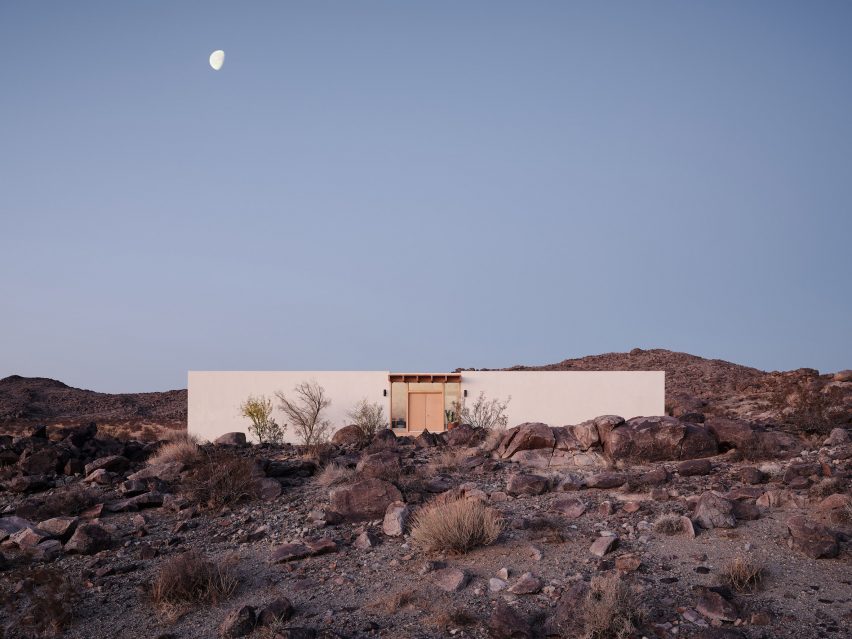
Ryan Leidner Architecture designed the home on an undeveloped desert site.
"[We sought to] respect the landscape with the design of the house, maintaining a compact footprint while still enjoying the sense of expansiveness one feels in the desert," said studio founder Ryan Leidner.
"In order to get to the property you drive several miles down an unpaved, sandy road through the desert, seeing the occasional home or trailer along the way."
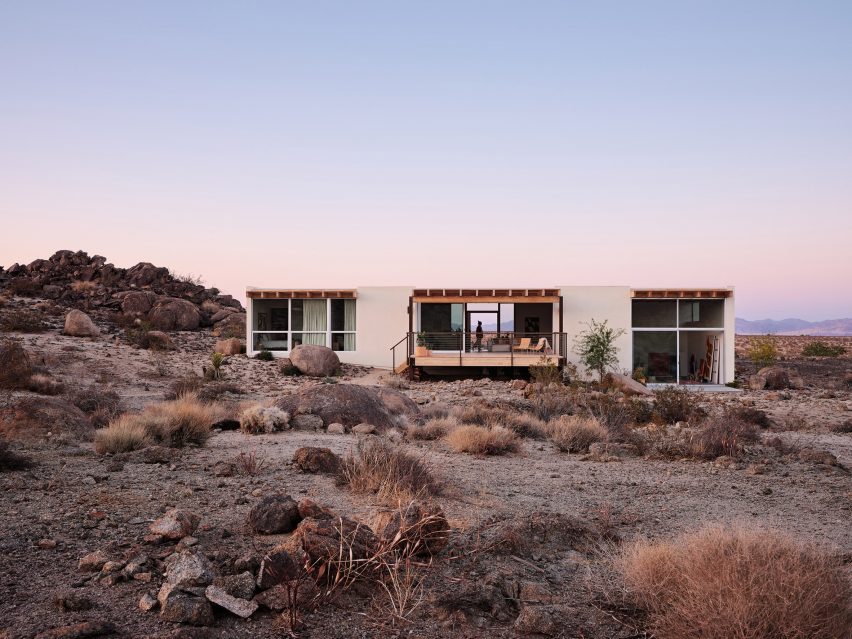
"And then you take a final turn, and the house begins to emerge from behind a rock outcropping, and what you see is this white line in the landscape, and it feels just so surprising, and I think beautiful."
The studio was informed by the straightforward logic of mid-century Eichler homes – after the studio renovated one – and decided to start with an exposed post-and-beam structure with regular spacing that informed the layout of the rooms.
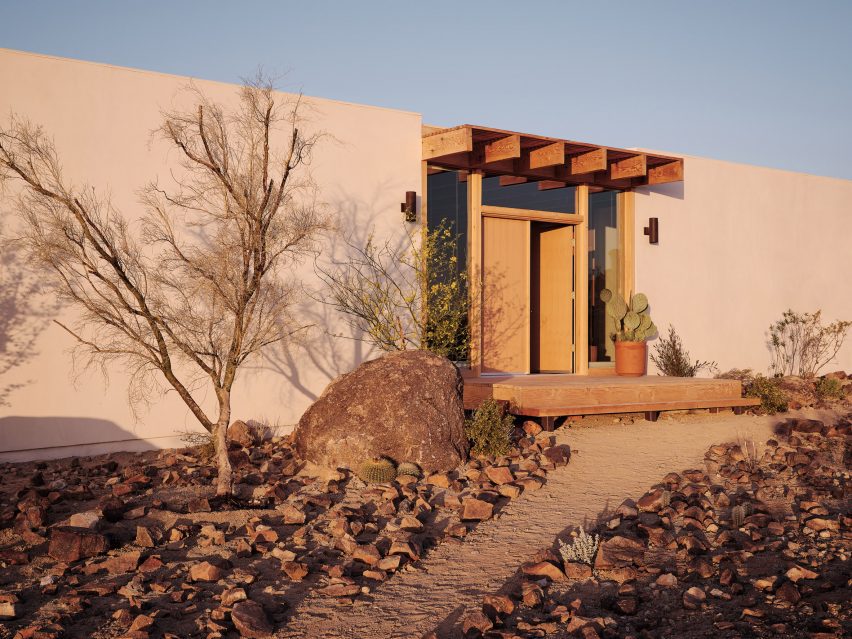
The team also looked at case studies from painter Georgia O'Keeffe's and Willem and Elaine de Kooning's studios, as well as Mexican architect Luis Barragan's personal residence when considering the space.
The rectangular wood frame, which steps down to accommodate a rocky slope, was coated in a white plaster stucco exterior to withstand the extreme fluctuations of the site's weather.
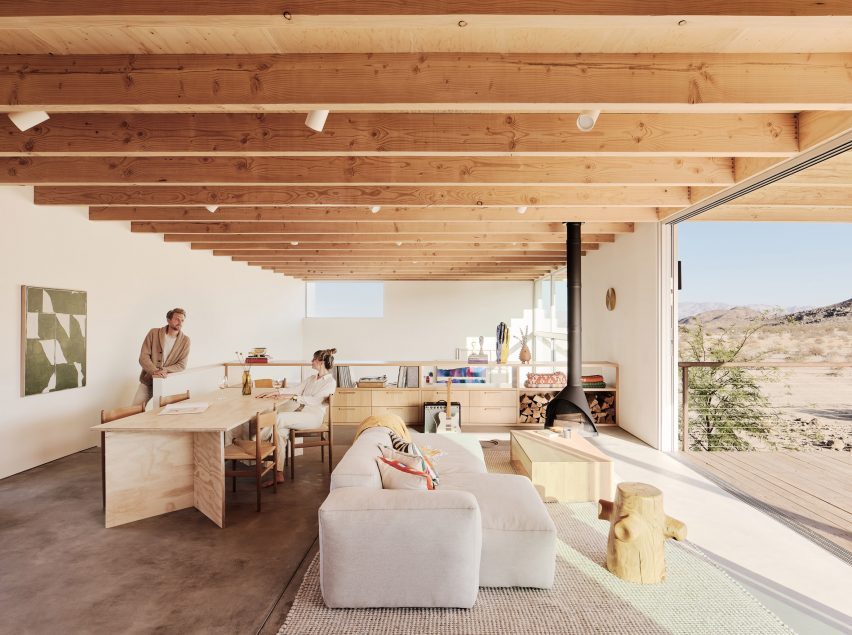
"We initially explored using a neutral tone plaster with the thought that it would blend in with the desert landscape," the team said.
"But as we studied that option further, we realized that it actually took away from the architecture and the landscape and that having more of a contrast in tone helped to highlight the beauty of the surroundings."
On one side, a solid white wall runs the length of the house, extending slightly past the transverse end walls to create small sheltered flanges. The wall is split in half by a set of double doors and sidelights that align with the doors on the other side of the house.
On the other side, the nearly symmetrical house features a wide central porch with an elevated deck that is accessed through floor-to-ceiling sliding glass walls.
Large windows – that bring light into the bedroom and artist studio – flank either end of the house and the wooden roof trusses extend a short way past the perimeter of the wall to shade the glazing.
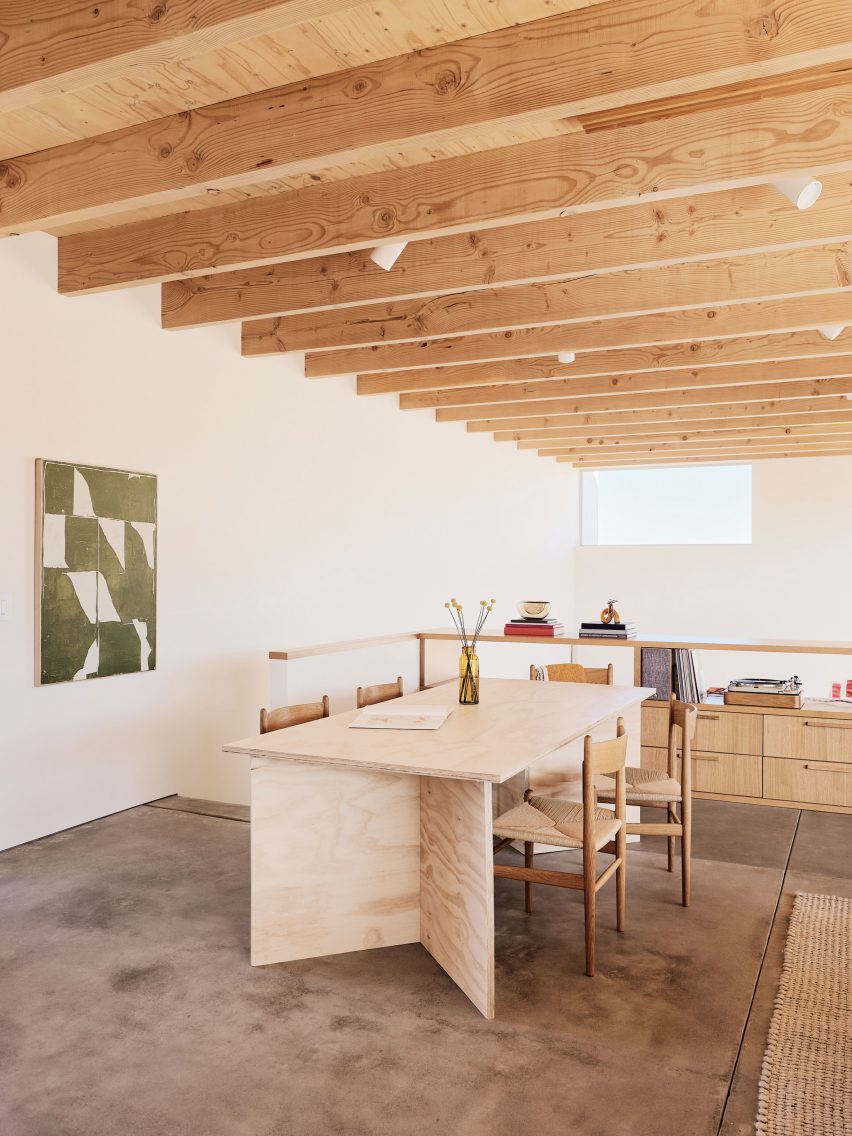
The short ends feature clerestory windows underscored by thin vertical wooden bands.
In the central space between the breezeway created by the open doors, the kitchen, dining and living room form the heart of the house with exposed wood ceilings, white walls, and concrete flooring.
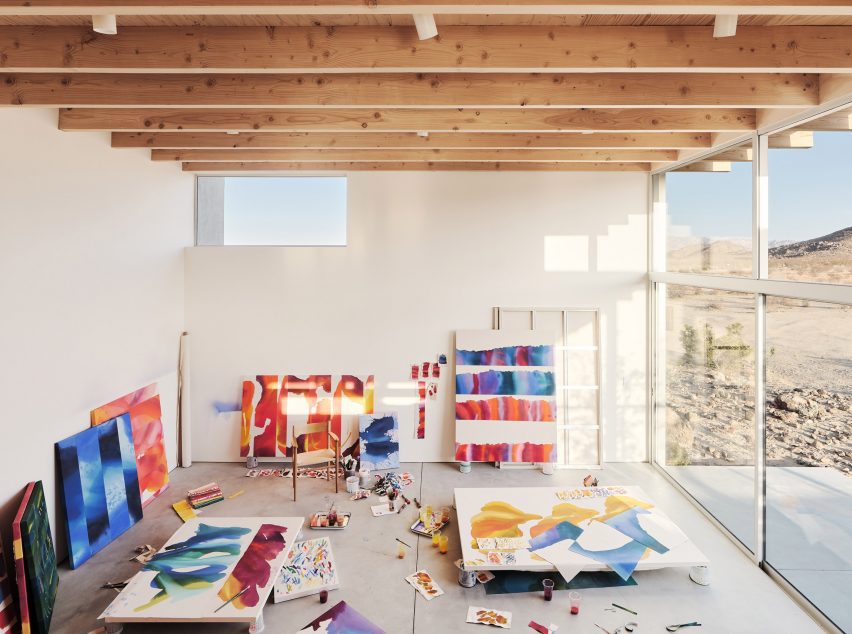
A short hallway off the kitchen leads to the bedroom and bathroom, while the other side of the main room drops a couple steps into the large open studio space.
"Living here has helped both of us slow down and savor each day," resident Heather Day said. "The way the windows frame the rugged landscape that seems to change throughout the day or with each season makes us feel closer to land. It's like an ever-evolving painting outside."
Recently, Ryan Leidner Architecture renovated a 1940s home in Bernal Heights, San Francisco with a bridge over the front garden and a 1960s Eichler house in Silicon Valley, from which he drew inspiration for this house.
The photography is by Joe Fletcher.